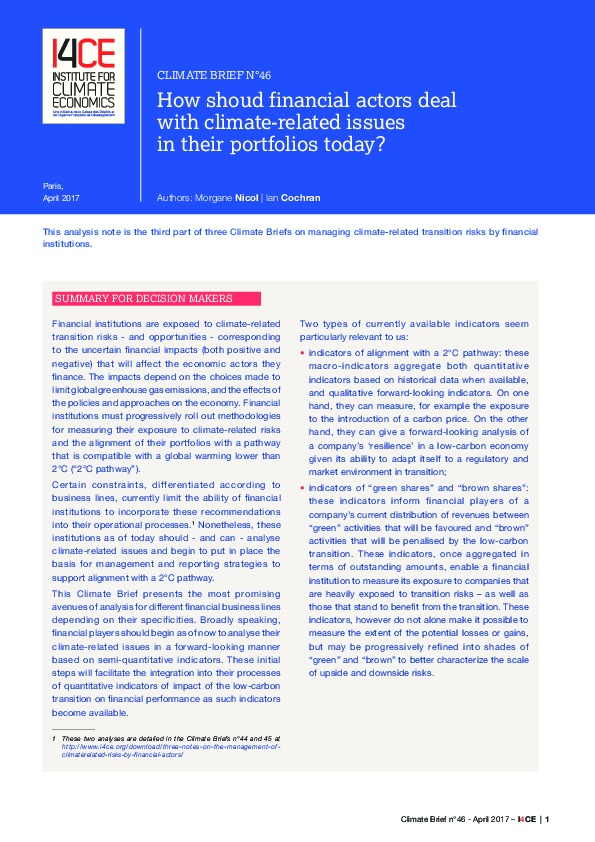How should financial actors deal with climate-related issues in their portfolios today?
Financial institutions face climate-related issues
Certain constraints, differentiated according to business lines, currently limit the ability of financial institutions to carry out on their portfolios a quantified forward-looking analysis based on scenarios. Nonetheless, these institutions as of today should – and can – begin to put in place the basis for management and reporting strategies to support alignment with a 2°C pathway. Various organisations – such as NGOs, extra-financial rating agencies, consulting firms and specialised service providers – are developing ‘Climate’ indicators, intended to enable financial actors to assess and address climate-related transition issues. Using one type or combination of such indicators is an initial step that will facilitate the integration into their processes of quantitative indicators of impact of the low-carbon transition on financial performance.
“Climate” indicators can be grouped into five main categories: carbon footprint indicators; “ESG” type qualitative indicators; “green share / brown share” indicators; “physical” carbon footprint indicators; and indicators of alignment with a low-carbon or 2°C pathway. Each type of indicator presents advantages and drawbacks and their relevance depends on the business lines and on the specific objectives of the financial institution.
Climate Brief 46 presents the most promising avenues of analysis for different financial business lines depending on their specificities. Broadly speaking, financial players should begin as of now to analyse their climate-related issues in a forward-looking manner based on semi-quantitative indicators.
Two types of currently available indicators seem particularly relevant
- indicators of alignment with a 2°C pathway: these macro-indicators aggregate both quantitative indicators based on historical data when available, and qualitative forward-looking indicators. On one hand, they can measure, for example the current exposure to the introduction of a carbon price. On the other hand, they can give a forward-looking analysis of a company’s ‘resilience’ in a low-carbon economy given its ability to adapt itself to a regulatory and market environment in transition;
- indicators of “green shares” and “brown shares”: these indicators inform financial actors of a company’s current distribution of revenues between “green” activities that will be favoured and “brown” activities that will be penalised by the low-carbon transition. These indicators, once aggregated in terms of outstanding amounts, enable a financial institution to measure its exposure to companies that are heavily exposed to transition risks – as well as those that stand to benefit from the transition. These indicators, however do not alone make it possible to measure the extent of the potential losses or gains, but may be progressively refined into shades of “green” and “brown”.
